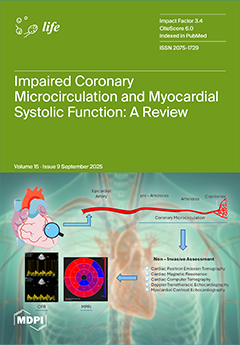In the present study, a new
Ganoderma sp. (ZHM1939) was collected from
Lincang, Yunnan, China, and described on the basis of morphological characters and multigene phylogenetic analysis of rDNA-ITS,
TEF1α and
RPB2 sequences. This fungus is characterized by the exceptionally large basidiomata,
[...] Read more.
In the present study, a new
Ganoderma sp. (ZHM1939) was collected from
Lincang, Yunnan, China, and described on the basis of morphological characters and multigene phylogenetic analysis of rDNA-ITS,
TEF1α and
RPB2 sequences. This fungus is characterized by the exceptionally large basidiomata, oval shape, a pileus measuring 63.86 cm long, 52.35 cm wide, and 21.63 cm thick, and a fresh weight of 80.51 kg. The skeleton hyphae from the basidiocarp are grayish to grayish-red in color, septate, and 1.41–2.75 μm in diameter, with frequently dichotomous branched and broadly ellipsoid basidiospores. The basidiospores are monocellular, ellipsoid, with round ends or one slightly pointed end, brown–gray in color, and measured 6.52–10.26 μm × 4.68–7.17 μm (
n = 30). When cultured for 9 days at 25 ± 2 °C on PDA, the colony was white, ellipsoid or oval, with slightly ragged edges, measured Φ58.26 ± 3.05 mm (
n = 5), and the growth rate = 6.47 mm/day; prosperous blast-spores formed after culturing for 21 days, making the colony surface powdery-white. The mycelia were septate, hyaline, branching at near-right angles, measured Φ1.28–3.32 μm (
n = 30), and had some connections. The blast-spores were one-celled, elliptic or barley-seed shaped, and measured 6.52–10.26 μm × 4.68–7.17 μm (
n = 30). Its rDNA-ITS,
TEF1α and
RPB2 sequences amplified through PCR were 602 bp, 550 bp and 729 bp, respectively. Blast-n comparison with these sequences showed that ZHM1939 was 99.67–100% identical to related strains of
Ganoderma mutabile. A maximum likelihood phylogenic tree using the concatenated sequence of rDNA-ITS,
TEF1α and
RPB2 was constructed and it showed that ZHM1939 clustered on the same terminal branch of the phylogenic tree with the strains Cui1718 and YUAN 2289 of
G. mutabile (Bootstrap support = 100%). ZHM1939 could grow on all the 15 original inoculum substrates tested, among which the best growth was shown on substrate 2 (cornmeal 40 g, sucrose 10 g, agar 20 g), with the fastest colony growth rate (6.79 mm/day). Of the five propagation substrates tested, substrate 1 (wheat grains 500 g, gypsum powder 6.5 g and calcium carbonate 2 g) resulted in the highest mycelium growth rate (7.78 mm/day). Among the six cultivation substrates tested, ZHM1939 grew best in substrate 2 (cottonseed hulls 75 g, rice bran 12 g, tree leaves 5 g, cornmeal 5 g, lime powder 1 g, sucrose 1 g and red soil 1 g) with a mycelium growth rate of 7.64 mm/day. In conclusion, ZHM1939 was identified as
Ganoderma mutabile, which is a huge mushroom and rare medicinal macrofungus resource. The original inoculum substrate 9, propagation substrate 1 and cultivation substrate 2 were the most optimal substrates for producing the original propagation and cultivation inocula of this macrofungus. This is the first report on successful growing conditions for mycelial production, but basidiocarp production could not be achieved. The results of the present work establish a scientific foundation for further studies, resource protection and application development of
G. mutabile.
Full article






